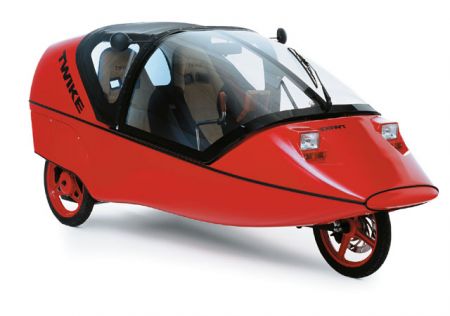|
 |
|||||||
|
Sheldon Brown website on Cycling There
is a great website on all aspects of bicycle riding, lots of technical information and especially Tandems. The site
is written and hosted by Sheldon Brown who is with Harris Cyclery (www.HarrisCyclery.com) in Why
Ride A Tandem? Riding
a normal, single-rider bicycle is a very rewarding experience, but a tandem bicycle adds a completely new dimension to cycling.
Different tandemists choose the long bike for different reasons: Sheldon Brown website on Cycling (Part
2) There
is a great website on all aspects of bicycle riding, lots of technical information and especially Tandems. The site
is written and hosted by Sheldon Brown who is with Harris Cyclery (www.HarrisCyclery.com) in The front rider is commonly
known as the "captain." Other names for the front rider include "pilot" and "steersman." The captain should be an experienced
cyclist, with good bike-handling skills and good judgment. In the case of a beginning team, the captain will need to use a
bit more upper-body strength than is needed for a single bike. As the team learns to work together, this will become less
important. The captain has two major responsibilities: Since the stoker cannot see the road directly ahead, the captain has
a special responsibility for warning of bumps in the road, so that the stoker can brace for them. When a couple fails to make it as a tandem team, it is almost always due to either the stoker being scared
as a result of an incompetent/inconsiderate captain, or due to saddle soreness. The captain should also warn the stoker of
shifts, especially shifts to a lower gear which may cause the stoker to lose balance if they come without warning. (Very experienced
teams eventually get past the need to call out most shifts, as they learn each others' styles.) Sheldon Brown website on Cycling Part 3 There
is a great website on all aspects of bicycle riding, lots of technical information and especially Tandems. The site
is written and hosted by Sheldon Brown who is with Harris Cyclery (www.HarrisCyclery.com) in Newton, Massachusetts. I would like to share, with his permission, an excerpt from
his article on Tandem biking. His website is The Stoker The rear rider is commonly known as the "stoker." Other names for the rear rider include "navigator", "tail gunner"
and "rear admiral" or "R.A." The rear rider is not a "passenger", but is an
equal participant. The stoker has two main responsibilities: The stoker can also do a bit of back rubbing now and then, as well as taking photographs, singing encouraging
songs, reading maps, etc. The team becomes more than the sum of its parts. An experienced tandem team develops a very special level of non-verbal
communication, via subtle weight shifts, variations in pedal force, and general empathy. After a few hundred miles together,
you will find yourself coasting at the same time, shifting without the need for discussion, and maneuvering smoothly even
at slow speeds. This is not just a matter of each rider acquiring captaining/stoking skills; when two equally experienced
teams switch stokers, something is lost, and this special communication doesn't happen...it really is unique to each couple.
Twike - Tandem Bike Inspired Cars If you’ve ever felt the desire to get in
some cardio work while driving to or from work, you are going to LOVE this three-wheeled German-built contraption called the
Twike. The rather unfortunate name is a combination of the two words Twin and Bike and effectively describes this light,
two passenger electric vehicle. The Twike design has been around for over a decade, first appearing in Enter subhead content here |
||||||||
|
Enter content here |
||||||||
 |
||||||||
|
Enter supporting content here |
||||||||
